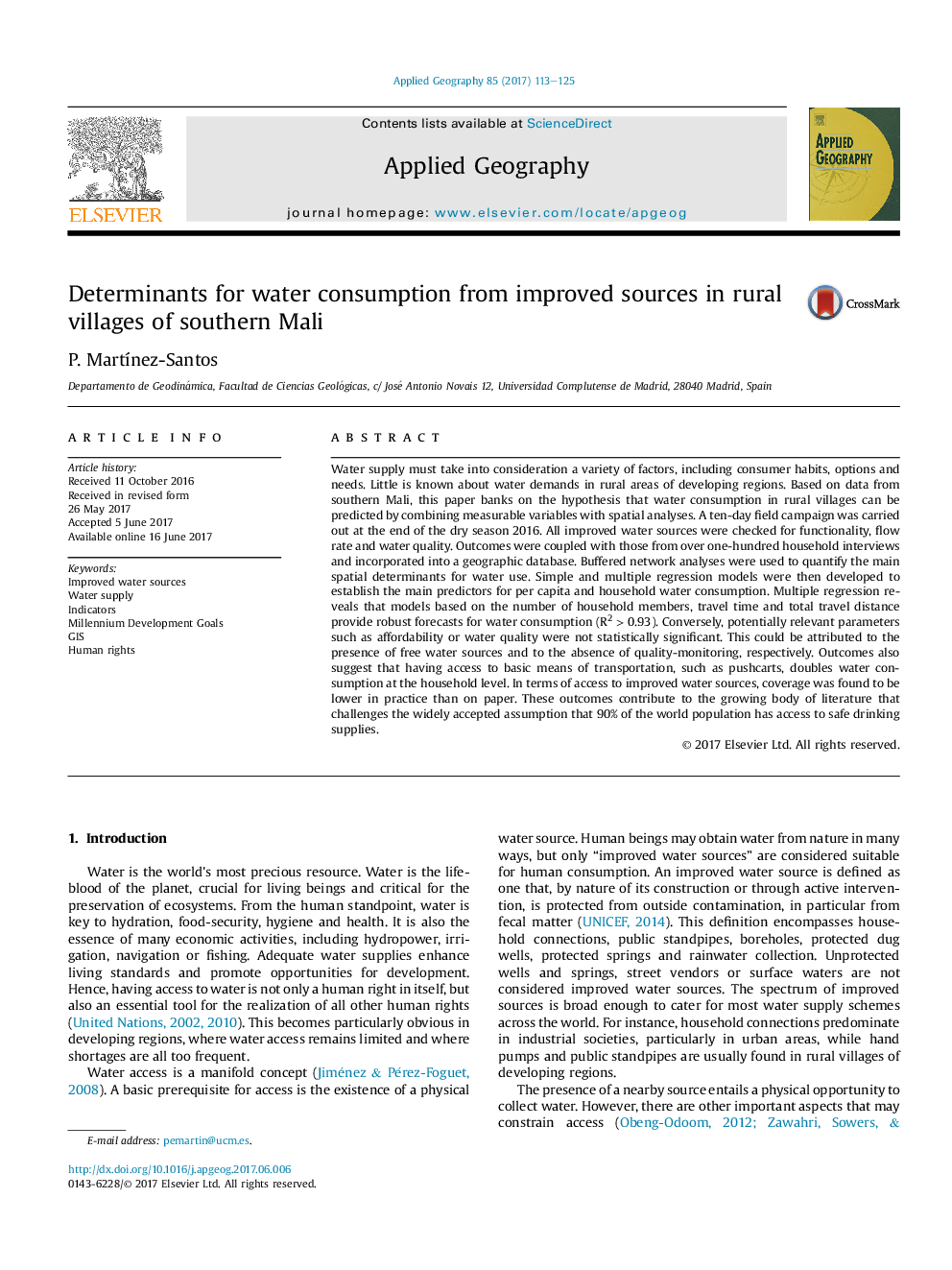| کد مقاله | کد نشریه | سال انتشار | مقاله انگلیسی | نسخه تمام متن |
|---|---|---|---|---|
| 6458264 | 1421032 | 2017 | 13 صفحه PDF | دانلود رایگان |
- We couple spatial analyses and interviews to predict water use in rural Mali.
- Multiple regression shows that family size, time and distance are useful predictors.
- Affordability and water quality were not statistically significant.
- Water consumption may be estimated reliably based on modest data requirements.
- Safe water coverage was found to be much lower in practice than on paper.
Water supply must take into consideration a variety of factors, including consumer habits, options and needs. Little is known about water demands in rural areas of developing regions. Based on data from southern Mali, this paper banks on the hypothesis that water consumption in rural villages can be predicted by combining measurable variables with spatial analyses. A ten-day field campaign was carried out at the end of the dry season 2016. All improved water sources were checked for functionality, flow rate and water quality. Outcomes were coupled with those from over one-hundred household interviews and incorporated into a geographic database. Buffered network analyses were used to quantify the main spatial determinants for water use. Simple and multiple regression models were then developed to establish the main predictors for per capita and household water consumption. Multiple regression reveals that models based on the number of household members, travel time and total travel distance provide robust forecasts for water consumption (R2Â >Â 0.93). Conversely, potentially relevant parameters such as affordability or water quality were not statistically significant. This could be attributed to the presence of free water sources and to the absence of quality-monitoring, respectively. Outcomes also suggest that having access to basic means of transportation, such as pushcarts, doubles water consumption at the household level. In terms of access to improved water sources, coverage was found to be lower in practice than on paper. These outcomes contribute to the growing body of literature that challenges the widely accepted assumption that 90% of the world population has access to safe drinking supplies.
Journal: Applied Geography - Volume 85, August 2017, Pages 113-125
